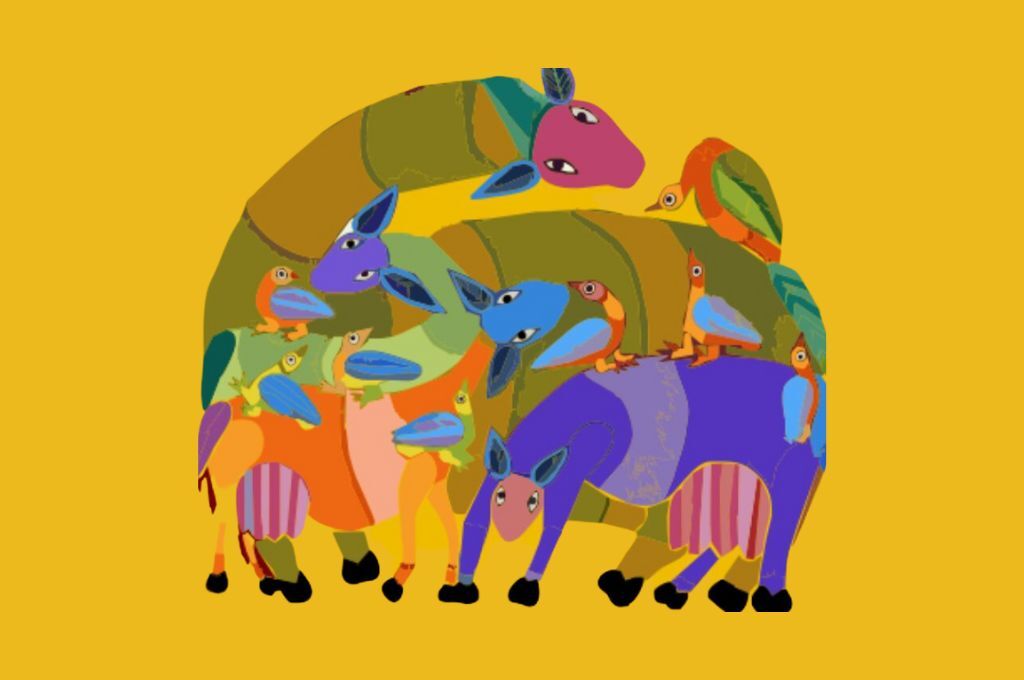How does one create infinite good with finite time and resources? This is the challenge that many nonprofits face. The traditional approach to this question of scale has been to build a larger organisation. However, there is an alternative—one that enables the organisation to scale through external resources by building communities, engaging networks, and creating platforms.
To help illustrate this point, I often use the metaphor of a 300-pound gorilla versus a herd of 300 deer. The gorilla represents a central entity that is slow to move and expensive to feed, whereas the deer are agile, responsive, and independent, both as individuals and as a group. While it may be easier to manage the gorilla, there are ways to manage the herd of deer–by creating a watering hole where they can gather. This watering hole represents a safe place of trust and resources where the community can share knowledge, ideas, and solutions. By building such a watering hole (a platform), nonprofits can create value throughout the ecosystem.
Platforms are the best way to engage what Seth Godin calls ‘tribes’—a group of people or a community that has a shared interest. The platform then becomes a way for people to communicate and organise.
However, when platforms focus only on their scale, or the number of users they have, they can inadvertently fracture communities. This is because the sheer size can make it difficult for users to connect in meaningful ways, leading to a fragmentation of the community. It is, therefore, crucial for platforms to prioritise building depth and trust within communities.
Building deeper connections can help a platform create value for their users, and foster loyalty and retention.
Depth refers to the quality of connections and interactions among community members, while trust is the sense of safety and reliability people feel within the community. Fostering deeper connections and trust could mean offering features, services, or content that cater to the specific needs and interests of the community members. Doing this can help a platform create value for their users, and foster loyalty and retention—both of which are key to long-term success.
To achieve any of this, however, it is important to first nurture a community around shared values—essentially beliefs, goals, and principles that unite a group of people and guide their interactions. This is the foundation on which platforms can then build a thriving community that can grow and evolve over time.

Building a community
I worked at Pratham Books from 2007 to 2014 when it chose the Creative Commons model and gave up its position as a content gatekeeper in the children’s publishing space—a bold move at that time. They openly licensed their content to spur discussion, and had regular interactions with the community. This enabled entrepreneurs to experiment with creating new formats for content, enabled organisations to make this content accessible for differently abled people, and encouraged everyone to localise the material in ways relevant to their contexts.
This approach allowed Pratham Books to harness the power of this vibrant community and the breadth of these external resources to achieve its larger goal of helping all children discover the joy of reading.
While Pratham Books is one of the first ones I know of that adopted this agile, community-centric platform model, I now see others in the nonprofit ecosystem such as Agami, Civis, Reap Benefit, and EdelGive Foundation’s GROW Fund that have developed innovative models to expand their impact using technology, capacity building, and social engagement.
Creating community-centric platform models
Agami seeks to elevate other innovators in the space to create a network of problem solvers rather than doing it alone. Civis is a platform that works under their umbrella. It creates a participatory structure for citizens to engage with draft policies and laws. Its open-source technology interface makes room for citizens to be active participants through public consultations on urban development, environment, social justice, information technology, and health. Civis then collates this data and shares it with the government to build accountability.
A similar initiative is Reap Benefit, dedicated to collective action around civic and environmental problems at a hyperlocal level in cities. Through a platform called Solve Ninjas, Reap Benefit gives agency to communities to solve the issues and propose solutions at the local level, whether it is designing better dustbins, waterless urinals, or community waste and garbage disposal methods. The information collected on the platform is then shared with stakeholders and governance to push for impact. Reap Benefit’s community-driven approach has allowed it to build a platform that empowers young people to become changemakers within their communities.
Platforms that serve communities can look very different while serving similar purposes.
An important realisation is that platforms that serve communities can look very different while serving similar purposes. EdelGive Foundation’s GROW Fund, which supports 100 nonprofits, is an example of a platform that goes beyond mere collaboration. It has effectively evolved into a transformative platform, fostering knowledge sharing, capacity building, and continuous improvement for its partner organisations. By implementing a platform model based on trust and community engagement, the GROW Fund has demonstrated the potential for such platforms to create sustainable social impact.
The reasons for the importance of these platforms are many:
- They provide a way to scale without scaling the organisation proportionally.
- They provide a way to bind and engage communities even without continuous engagement.
- They help build sustainability and reliability by creating many community audiences and voices.
- They are a force multiplier, offering the possibility of leveraging the power of networks. As the web grows, its value increases exponentially.
- They offer some protection against failure. Once stable, a platform needs far less overhead to function than an organisation.
While existing platforms such as LinkedIn, Facebook, and Instagram are good, they cannot be the primary platforms since their agenda is their own. They are beachheads in the digital world, but these companies hold the development, messaging, and purpose and seek to build their own communities on their platforms.
Investing in the community and nurturing it
Communities provide us with a sense of identity and belonging and can offer support during difficult times. However, communities don’t just happen; they need to be built and maintained through the investment of care. This can take many forms, from simply being friendly and welcoming to new members to organising shared events and forums. But whatever form it takes, the care we invest in our community helps to create a stronger, more resilient place for all of us.
J P Rangaswami, in his blog titled ‘The Plural of Personal Is Social,’ writes: “You need to start thinking of the customer as someone to have a relationship with, to get to know, to invest in, to trust, to respect. And you need to get everyone in the company to think that way, to act that way, in everything they do. And you need to do this everywhere, not just with your customers. Not just with your supply web or your trading partners. Not just with your staff and your consultants. Everyone. Everywhere.”
What organisations need then is an internal culture that enables this. They need to learn how to work with crowds and govern through the network rather than controlling the network itself, understanding the community by working with insights from learning and feedback loops. This can only be done if the tone is set at the top of the organisation and demonstrated in practice.
My time at Pratham Books taught me valuable lessons about communities and platforms and their role in creating positive social impact. Witnessing the power of building and nurturing a community to create value throughout an ecosystem has impacted my work—it has instilled in me the desire to cultivate care, trust, and value for users in any community-building endeavour. I have understood that nonprofits can achieve scale and catalyse infinite good with finite time and resources through engaging networks, creating platforms, and fostering communities.
I now approach platform and community building with a focus on deepening connections and building trust, and understanding that scale only happens at the speed of trust. Because only when we view the community as an investment are we more likely to work together towards common goals and create a stronger sense of connection. This is the mindset I now carry with me in all my work.
Disclaimer: IDR is funded by Rohini Nilekani Philanthropies.
—





